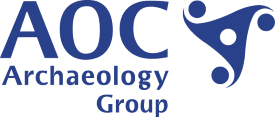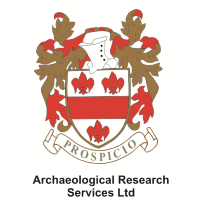Sessions
| Rigour in Sampling: in the Field and the Lab | |
|---|---|
| Sponsored by | Monday 14:00 |
 |
The ‘sample’ is often at the heart of the dialogue between archaeologists and radiocarbon scientists, and this session presents a series of papers that should provide a stimulating discussion about the field and laboratory procedures relating to sampling. Rather than any focus on difficult samples, the topics here more directly cover issues related to taphonomy and context characterisation, as well as a better understanding of potential issues with specific sample types. |
| Session Chair: Elisabetta Boaretto | |
| Compound Specific Dating in Archaeology | |
|---|---|
| Sponsored by | Monday 16:00 |
 |
The continuing improvements in AMS technology mean that 14C dating of carbon samples of 10s to 100s of micrograms is now quite feasible and commonly undertaken. This has opened up the possibility to date single compounds or groups of compounds that can be linked to particular biological processes or reservoirs, hence providing samples that can be directly linked to specific archaeological questions. The session focuses on radiocarbon analysis of lipids in pottery and on collagen purification protocols. |
| Session Chair: Tom Higham | |
| Dealing with Large Datasets | |
|---|---|
| Sponsored by | Tuesday 09:00 |
 |
While archaeologists are becoming more adept at analysing and interpreting large site-based datasets, there is growing interest in summarising sets of radiocarbon dates from many sites across vast regions. These papers look at how we might better approach using “dates as data” to develop more accurate and transparent understanding about past regional events and processes. |
| Session Chair: Christopher Bronk Ramsey | |
| 14C Dating of Difficult Sample Types | |
|---|---|
| Sponsored by | Tuesday 10:00 & 11:20 |
 |
It is difficult for both archaeologists and radiocarbon laboratories to date certain types of samples, from old bone samples with poor collagen yields to handling very small samples with low carbon content. This session will cover a range of techniques including the removal of “contaminants” such as pitch from artefacts, consolidants from museum specimens and post-mortem carbonate in tooth enamel. It will also cover the dating of samples with low carbon contents including iron and low collagen bone samples. |
| Session Chairs: Johannes van der Plicht & Fiona Brock | |
| Dating the Mesolithic/Neolithic Transition | |
|---|---|
| Sponsored by | Tuesday 14:40 & 16:00 |
 |
Of interest to many archaeologists worldwide is the shift from a primarily hunter-gatherer society to sedentary agriculturalist. This transition, in many parts of the world, marks the first time that a regular surplus in production was available to society, paving the way for increased sedentism with larger population, craft specialisation, and the emergence of new forms of social structures. This session provides a balance of papers on site-based and regional chronology building, as well as problematising how archaeologists have developed chronologies and subsequently modelled society during this transition. |
| Session Chairs: Alison Sheridan & Alasdair Whittle | |
| Freshwater Reservoir Effects | |
|---|---|
| Sponsored by | Wednesday 09:00 |
 |
The Marine Reservoir Effect (MRE) is a well-established phenomenon whereby radiocarbon ages for samples containing marine-derived carbon are falsely old. The Freshwater Reservoir Effect (FRE) is a more recently observed occurrence, whose magnitude can be significantly greater and variable than that of the MRE. While hard-water effects have been long recognised, the transfer of this effect through the food chain had largely been ignored until the late 1990s. This session will commence with a discussion of the Bayesian model for diet reconstruction, FRUITS (Food Reconstruction Using Isotopic Transferred Signals), and its use for the identification of non-terrestrial resources and hence potential reservoir effects. The session will then focus on all aspects of FREs including their magnitude, influence on archaeological interpretation of sites and methods of compensating for or avoiding their effect. |
| Session Chair: Ricardo Fernandes | |
| Problems with Coastal and Island Environments | |
|---|---|
| Sponsored by | Wednesday 11:20 |
 |
Numerous issues often hinder archaeological interpretation of the temporality of human activity on coasts and islands. For example, local radiocarbon offsets brought about by marine and/or freshwater reservoir effects can result in radiocarbon ages being erroneously old by up to several hundred years. The drift of marine animals and debris, as well as diets of mixed terrestrial, marine and/or freshwater resources, can further complicate dating. In addition to these concerns, uncertainty of deposition and post-depositional processes can add to the confusion of exactly what kinds of events are being dated. This session will concentrate on individual cases of understanding the magnitude of local and regional marine reservoir effects (MRE), elucidating MRE in human bone collagen within complex marine/brackish water systems and problems encountered within restricted island environments. |
| Session Chair: Clive Bonsall | |
| Using 14C to Address Regional Questions | |
|---|---|
| Sponsored by | Thursday 09:00 |
 |
Understanding regional processes requires a solid grasp of the temporal relationship between sites and events. This session presents papers that use chronologies developed from radiocarbon dates to look at questions within regional scopes, ranging from South America across Europe and to Asia. |
| Session Chair: Roderick McCullagh | |
| Bayesian Modelling of Archaeological Sites | |
|---|---|
| Sponsored by | Thursday 11:20 |
 |
Archaeologists most frequently construct site-based Bayesian chronological models. This session looks site-based Bayesian modelling that are far from simple. Along with a presentation about new tools for constructing Bayesian chronologies, the papers investigate chronology building for very large complex sites or multiple sites in an area, to engage with questions regarding both inter- and intra-site chronological variability, ritual and domesticity, and trade. |
| Session Chair: Alex Bayliss | |
| Precision in 14C Dating | |
|---|---|
| Sponsored by | Thursday 14:00 |
 |
Whether dealing with a single radiocarbon measurement or with a sequence or set of measurements, it is necessary to consider precision and how this can be maximised. This session will centre on precision problems associated with calibration, including the advantages of a calibration curve with high temporal resolution, the advantage of potential tie-points in the calibration curve that have the potential to increase precision, improving precision beyond 30,000 years and the comparability of data from different laboratories when the data might be used in statistical modelling. |
| Session Chair: E. Marian Scott | |
| Bayesian Modelling Beyond the Site | |
|---|---|
| Sponsored by | Thursday 16:00 |
 |
Most Bayesian models are aimed at developing more robust and precise site chronologies. The papers in this session go further and explore how the timing of events and temporality of being can be particularly powerful at interpreting processes either at regional scales or as part of a cross-cultural analysis. |
| Session Chair: Guy De Mulder | |
| Mortar Dating | |
|---|---|
| Sponsored by | Friday 09:00 |
 |
The past few years has witnessed a substantially increased interest in the dating of lime mortar as a direct means of estimating construction phases of buildings. However, accurate dating of this sample type is not without its problems. This session will feature presentations on the recent Mortar Dating Inter-comparison Study (MODIS) as well as presentations on specific laboratory approaches to the technique. |
| Session Chair: Mark Van Strydonck | |
| Forum: Relationship between Archaeologists and 14C Labs | |
|---|---|
| Friday 11:30 | |
| This will take the form of a panel of 4-6 archaeologists and 14C dating experts who will give a 5 minute presentation on how they perceive the relationship between the archaeologist and the radiocarbon laboratory and how a closer interaction might be to the benefit of both parties. This will then be opened up to a general discussion. | |
| Forum Chair: Gordon Cook | |
